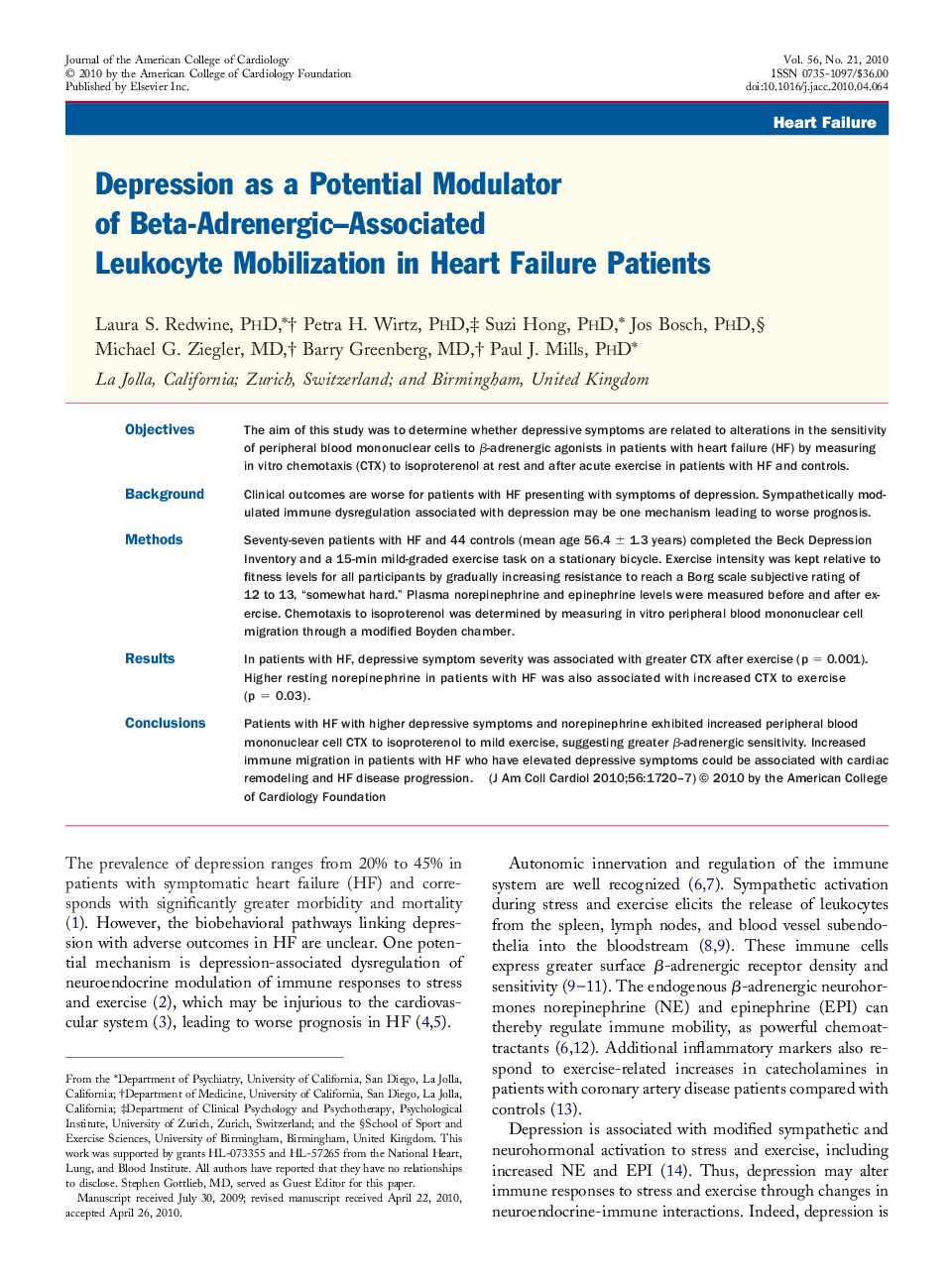| Article ID | Journal | Published Year | Pages | File Type |
|---|---|---|---|---|
| 2950059 | Journal of the American College of Cardiology | 2010 | 8 Pages |
ObjectivesThe aim of this study was to determine whether depressive symptoms are related to alterations in the sensitivity of peripheral blood mononuclear cells to β-adrenergic agonists in patients with heart failure (HF) by measuring in vitro chemotaxis (CTX) to isoproterenol at rest and after acute exercise in patients with HF and controls.BackgroundClinical outcomes are worse for patients with HF presenting with symptoms of depression. Sympathetically modulated immune dysregulation associated with depression may be one mechanism leading to worse prognosis.MethodsSeventy-seven patients with HF and 44 controls (mean age 56.4 ± 1.3 years) completed the Beck Depression Inventory and a 15-min mild-graded exercise task on a stationary bicycle. Exercise intensity was kept relative to fitness levels for all participants by gradually increasing resistance to reach a Borg scale subjective rating of 12 to 13, “somewhat hard.” Plasma norepinephrine and epinephrine levels were measured before and after exercise. Chemotaxis to isoproterenol was determined by measuring in vitro peripheral blood mononuclear cell migration through a modified Boyden chamber.ResultsIn patients with HF, depressive symptom severity was associated with greater CTX after exercise (p = 0.001). Higher resting norepinephrine in patients with HF was also associated with increased CTX to exercise (p = 0.03).ConclusionsPatients with HF with higher depressive symptoms and norepinephrine exhibited increased peripheral blood mononuclear cell CTX to isoproterenol to mild exercise, suggesting greater β-adrenergic sensitivity. Increased immune migration in patients with HF who have elevated depressive symptoms could be associated with cardiac remodeling and HF disease progression.
